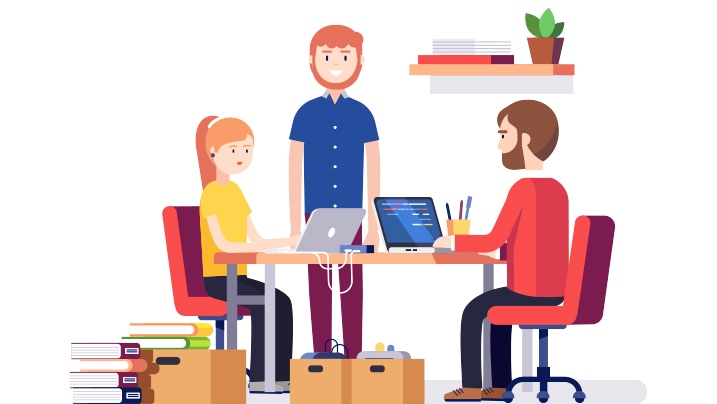CKYC Registry
-
Customer Service Contact us Service request Locate a branch
Find all the help you need
Scan the QR, get our app, and find help on your fingertips

Help CenterSupport topics, Contact us, FAQs and more
-
Login
Are you ready for an upgrade?
Login to the new experience with best features and services
-
Login
Are you ready for an upgrade?
Login to the new experience with best features and services
- Accounts
-
Deposits
IDFC FIRST Bank Deposits
View all Deposits -
Loans
IDFC FIRST Bank Loans
View all Loans - Wealth & Insure
-
Payments
IDFC FIRST Bank Payments
View all Payments -
Cards
IDFC FIRST Bank Cards
View all Cards - Blogs
- Corporate Account
-
Cash Management Services
IDFC FIRST Bank Cash Management Services
View all Cash Management Services - Supply Chain Finance
-
Corporate Lending
IDFC FIRST Bank Lending
View all -
Treasury
IDFC FIRST Bank Treasury
See more details - NBFC Financing
Support topics, Contact us, FAQs and more
- IDFC FIRST Bank Accounts
-
Savings Account
-
Corporate Salary
Account -
Senior Citizens
Savings Account -
First Power
Account -
Current Account
-
NRI Savings
Account -
TASC Institutional
Account -
Savings Account
Interest Calculator
- IDFC FIRST Bank Deposits
-
Fixed Deposit
-
Recurring Deposit
-
NRI Fixed Deposit
-
Safe Deposit Locker
-
FD Calculator
-
RD Calculator
- IDFC FIRST Bank Loans
-
Personal Loan
-
Consumer Durable
Loan -
Home Loan
-
Business Loan
-
Professional Loan
-
Education Loan
-
New Car Loan
-
Pre-owned Car Loan
-
Two Wheeler Loan
-
Pre-owned Two
Wheeler Loan -
Commercial Vehicle
Loan -
Gold Loan
-
Loan Against Property
-
Loan Against Securities
-
Easy Buy EMI card
-
Personal Loan
EMI Calculator -
Education Loan
EMI Calculator -
Home Loan
EMI Calculator
- IDFC FIRST Bank Wealth & Insure
-
FIRST Select
-
FIRST Wealth
-
FIRST Private
-
Mutual Funds
-
Sovereign Gold Bond
-
Demat Account
-
Term Insurance
-
Life Insurance
-
Health Insurance
-
General Insurance
-
Bonds
-
Loan Against
Securities -
Portfolio Management
Service
- IDFC FIRST Bank Payments
-
FASTag
-
Credit Card
Bill Payments -
UPI
-
Funds Transfer
-
Forex Services
-
Pay Loan EMI
- IDFC FIRST Bank Cards
-
Ashva :
Metal Credit Card -
Mayura :
Metal Credit Card -
FIRST Millennia
Credit Card -
FIRST Classic
Credit Card -
FIRST Select
Credit Card -
FIRST Wealth
Credit Card -
FIRST WOW!
Credit Card -
Deals
-
Debit Cards
-
Co-branded Cards
-
Credit Card
EMI Calculator -
FIRST Corporate
Credit Card -
FIRST Purchase
Credit Card -
FIRST Business
Credit Card
- Premium Metal Credit Cards
-
AshvaLifestyle1% Forex₹2,999
-
MayuraLifestyleZero Forex₹5,999
-
FIRST PrivateInvite Only
- Best for travellers
-
MayuraZero ForexMetal₹5,999
-
Ashva1% ForexMetal₹2,999
-
FIRST WOW!Zero ForexTravelLifetime Free
-
FIRST SWYPTravel OffersEMI₹499
-
FIRST Select1.99% ForexLifestyleLifetime Free
-
FIRST Wealth1.5% ForexLifestyleLifetime Free
-
Club VistaraTravelLifestyle₹4,999
-
IndiGo IDFC FIRST Dual Credit CardTravelLifestyle₹4,999
- Max benefits, Free for life
-
FIRST Classic10X RewardsShoppingNever Expiring Rewards
-
FIRST Millennia10X RewardsShoppingNever Expiring Rewards
-
FIRST Select10X RewardsLifestyle1.99% Forex
-
FIRST Wealth10X RewardsLifestyle1.5% Forex
-
FIRST WOW!RewardsTravelZero Forex
-
LIC ClassicRewardsInsuranceShopping
-
LIC SelectRewardsInsuranceShopping
- Reward Multipliers
-
AshvaLifestyleMetal₹2,999
-
MayuraLifestyleZero Forex₹5,999
-
FIRST ClassicNever Expiring RewardsShoppingLifetime Free
-
FIRST MillenniaNever Expiring RewardsShoppingLifetime Free
-
FIRST SelectNever Expiring RewardsLifestyleLifetime Free
-
FIRST WealthNever Expiring RewardsLifestyleLifetime Free
- Rewards & Credit on UPI
-
FIRST Power+FuelUPI₹499
-
FIRST PowerFuelUPI₹199
-
FIRST EA₹NVirtual1% Cashback₹499
-
FIRST DigitalVirtualUPI₹199
-
IndiGo IDFC FIRST Dual Credit CardUPITravelDual cards
- Fuel and Savings
-
FIRST PowerRewardsUPI₹199
-
FIRST Power+RewardsUPI₹499
-
LIC ClassicRewardsInsuranceShopping
-
LIC SelectRewardsInsuranceShopping
- Express and Flaunt
-
AshvaMetal1% Forex₹2,999
-
MayuraMetalZero Forex₹5,999
-
FIRST SWYPEMIOfferMAX₹499
-
FIRST MillenniaRewardsShoppingLifetime Free
- FD Backed rewarding Credit Cards for all
-
FIRST EA₹NVirtualCashback₹499
-
FIRST WOW!Zero ForexTravelLifetime Free
-
CreditPro Balance TransferTransfer & SaveReduce InterestPay Smartly
- IDFC FIRST Bank NRI Forex Solutions
-
Send money to India-Wire transfer
-
Send money to India-Digitally
-
Send money abroad
-
Max Returns FD (INR)
- IDFC FIRST Bank MSME Accounts
-
Platinum Current
Account -
Gold
Current Account -
Silver Plus
Current Account -
Merchant Multiplier
Account -
Agri Multiplier
Account -
TASC Institutional
Account -
Dynamic Current
Account -
World business
Account -
First Startup
Current Account
- IDFC FIRST Bank Business Loans
-
Business Loan
-
Professional Loan
-
Loan Against Property
-
Business Loan for Women
-
Working Capital Loan
-
Construction Equipment Loan
-
Machinery Loan
-
Healthcare Equipment Loan
- IDFC FIRST Bank Business Solutions
-
Payment Solutions
-
Tax Payments
-
Doorstep Banking
-
Point of Sale (POS)
-
Escrow Accounts
-
NACH
-
Payment Gateway
-
UPI
-
Virtual Accounts
-
As per amendment in the Income Tax Rules, PAN or Aadhaar are to be mandatorily quoted for cash deposit or withdrawal aggregating to Rupees twenty lakhs or more in a FY. Please update your PAN or Aadhaar. Kindly reach out to the Bank’s contact center on 1800 10 888 or visit the nearest IDFC FIRST Bank branch for further queries.
-
-
Most Searched
Sorry!
We couldn’t find ‘’ in our website
Here is what you can do :
- Try checking the spelling and search
- Search from below suggestions instead
- Widen your search & try a more generic keyword
Suggested
Get a Credit Card
Enjoy Zero Charges on All Commonly Used Savings Account Services
Open Account Now
For all the repercussions that the COVID-19 pandemic continues to cause, its influence on digital penetration into the nation’s hinterland cannot be denied. Digitisation has been gathering force for a few years now, but the pandemic made it an essential rite of passage for businesses and consumers looking to adopt the new/next normal. Alternately, it can also be said that because of the COVID-19 pandemic, digital adoption has accelerated by several years.
In India, the inertia of holding on to a cash-based economy came to a grinding halt during the lockdown of 2020. Businesses saw digitisation as the only way to reach out to customers, while customers had to switch to digitised platforms en masse to consume while maintaining safety. The government, on its part, was always keen on a digital India and saw its fruition during the pandemic and in subsequent days. We look at how the popularity of contactless technologies has facilitated digital adoption in India.
A foundation for e-governance
Measures were introduced early into the pandemic which combined global positioning systems, AI and data analytics to collect and disburse healthcare-related information. Smartphones were provided to Anganwadi workers to cater to their local population and decentralise the use of technology. The Jan Dhan Yojana, the key to the disbursal of e-governance benefits, also received improved response during the pandemic. 4 crore new accounts were registered during FY 21, as the total deposit rose by Rs 20,000 crores despite the decrease in earnings and job losses owing to the pandemic.
Bringing communities closer
Technology was used by people in innovative ways. Whether it was bridging the gap between loved ones separated by closed borders, or making hospital visits safe through video calls, technology made these tough times slightly easier. Technology was also used to manage service and safety in containment zones, enlisting unskilled labourers like hand cart and rickshaw pullers for local supplies, and increasing active users for mobile banking app among unorganised street vendors. It also helped in monitoring and disinfecting localities or even managing the demand and supply of essentials and medical items.
Digital skills
Aggregator apps brought the local grocery store closer to home-stuck citizens through the tech-aided ordering and delivery solutions. 69% of Indian workers expressed high confidence towards the adoption of new technologies, according to a PwC survey. The need for digital skills has increased due to the pandemic, something that was asserted by 90% of respondents in a SalesForce and YouGov study. Many digital skillset requirements are coming in from non-IT companies that have gone digital due to the pandemic. It was also a wake-up call for companies that were underinvesting in digitisation, as the pandemic proved that technology was crucial for competitive advantage.
Facilitating growth for private businesses
Digital adoption by small businesses is bound to expand their reach and speed of service. For example, women artisans in rural Gujarat benefited from digital training imparted by an NGO named SEWA. Through WhatsApp groups, social media presence and cashless payment acceptance, these artisans were able to cope with the lockdown effect on their traditional business model. Pandemic was not easy for most small businesses. However, 54% of small businesses who opted for digitisation noted cost reduction, while 51% admitted to having gained a competitive advantage (survey by Dun & Bradstreet). These benefits can cancel out the negative impacts of the pandemic through long-term growth.
READ MORE
Technology-aided education
Education never stops, and digitisation made sure that students continue with theirs despite the lockdown. Online meeting tools came out of MNC meeting rooms and connected teachers and students in many schools. The government introduced DIKSHA, a digital content platform for school education. It provides open access to NCERT, CBSE and National Institute of Open Schooling, and is available as a mobile app also. It also facilitates training in coding at the middle school level, thus promoting digital adoption at an elementary level.
Transforming the aspirations of people
The softer aspects of digital adoption cannot be overlooked as well. Technology was widely used to support, inform and protect people during the pandemic in the form of apps and online services. There was a 30% spike in data consumption in India by the middle of 2020. Internet penetration facilitated people’s needs for content streaming, video calling, gaming and official needs. To ensure last-mile connectivity, Google committed an investment of $10 billion in the next five to seven years. Similarly, Reliance Jio opened up for fresh funding to invest in their drive for a digital India. Thus, digitisation and technology also addressed the aspirational and lifestyle needs in India.
It's safe to say that the pandemic reiterated the need for a more digitised ecosystem in the country. The government, corporates, and individuals responded to it with their promptness towards digital adoption. From government policies to the strategic digital transformation of businesses, and from digital consumer patterns to the hyper-personalised and connected customer experiences, the acceleration in India’s digital reset has been obvious since the COVID-19 outbreak. In the ongoing pandemic people are earning money online with zero investments through IDFC First Bank's refer and earn money app.
Disclaimer
The contents of this article/infographic/picture/video are meant solely for information purposes. The contents are generic in nature and for informational purposes only. It is not a substitute for specific advice in your own circumstances. The information is subject to updation, completion, revision, verification and amendment and the same may change materially. The information is not intended for distribution or use by any person in any jurisdiction where such distribution or use would be contrary to law or regulation or would subject IDFC FIRST Bank or its affiliates to any licensing or registration requirements. IDFC FIRST Bank shall not be responsible for any direct/indirect loss or liability incurred by the reader for taking any financial decisions based on the contents and information mentioned. Please consult your financial advisor before making any financial decision.
The features, benefits and offers mentioned in the article are applicable as on the day of publication of this blog and is subject to change without notice. The contents herein are also subject to other product specific terms and conditions and any third party terms and conditions, as applicable. Please refer our website www.idfcfirstbank.com for latest updates.























